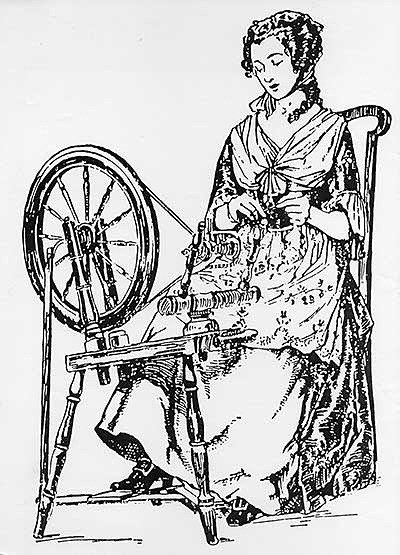
Museum archives: George Hatcher’s Possessions
In 1706 George Hatcher had a serious cash flow problem. George and his wife Ann had one child, Jane, baptized in 1702 and there was another on the way. He is described in the baptismal records as a 'poor labourer', so the parish clerk was identifying him as being in the very poorest occupation.George, therefore, was a man with limited resources, but the Hatcher family had been Steyning people for a hundred years and he was the occupier of a house. As such he was liable to pay the rate for the relief of the poor of the parish.
He was only required to find 'two shillings and nine pence ¾' but he couldn’t do it. So, in March 1706, with his wife 4 months pregnant with their second child, he was summoned to 'personally appear before two of Her Majesty’s Justices of the Peace, as shall be present at the White Horse Inn . . to show cause why you refuse to pay the Rate of Assessment.' After the hearing the justices declared that he 'hath shewn no cause why he should not pay the same.'
A warrant was issued for the distraint 'of the goods and chattels of the said George Hatcher' and the task of seizing his goods fell to the two overseers of the poor, Michael Longmer and Thomas Swain. Longmer was a carpenter by trade and Swain a 'chandeler' and, in such a small town they would have known George Hatcher. Moreover, they both had young children of a similar age to George’s so may well have had some fellow feeling for him.
But their task was to seize the goods and chattels and sell them for the good of the parish and, after collecting the debt of 2s 9¾d and making allowance for any expenses, to return any surplus money to the Hatcher family. So, in March 1706, they did this and, in the process, made a careful list of George’s possessions.
For someone struggling to pay 2s 9¾d there were a surprising number of them '2 pr tongs, 1 slipe, 1 pot hook, 1 grid iron, 1 flock bed and Things belonging to it, 1 chest, 2 boxes, a woollen wheell, 1 brass ketle and warming pan, 1 skillet, 1 nine gallon vesel and a ronlet, 1 eared tub, 1 round tub, 1 tray, 2 poridge pots, 2 pails, 4 chaires a table and form, 1 cupbord and a wooden Cradle, 1 tin pudding pan, 5 peuter dishes, 1 flagon, 3 peuter porringers, 1 pie place, 1 tin pudding pan, 1 dozen of dishes and spoons, a wooden plater and bowle, 1 brass frying pan. Sum husbandry Toolls not All At home'.
We see that they had a cradle as well as their bed – though that was probably quite lumpy as it was stuffed with coarse wool or cut up pieces of old cloth, rather than with feathers. Ann had a spinning wheel and there were a good many cooking items for use on an open fire. Some of the unusual objects one can guess at, so an 'eared tub' would, in all likelihood, have been a wooden tub with handles protruding from the rim. A 'ronlet', as it is coupled in the list with a 'nine gallon vesel', may be another container, but there are no clues to the identity of a 'slipe'. For the Rev. Parish in his Dictionary of Sussex Dialect it was a verb meaning 'to take off the outside cover of something – particularly bark from trees' so maybe it was a tool to do this; a tool that would have been needed in the tannery.
The picture conjured up is of a family which, although they did have basic assets which might have been sold, couldn’t face the prospect of struggling with fewer and fewer resources each year. Although the sale of the spinning wheel alone could have provided the money they needed, perhaps George was improvident with what money he had and that the family actually relied on what Ann could earn by spinning wool.

